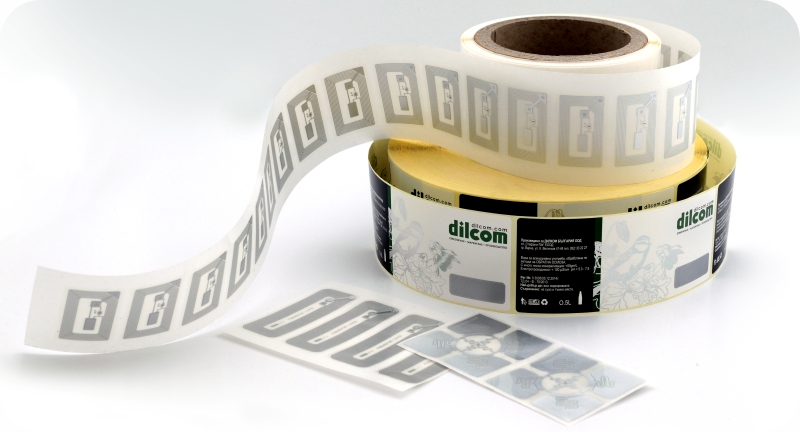Date: 03 May 2020

In the third, final part of our series about RFID tags, we will discuss their applications.
Radio Frequency Identification technology uses radio waves to identify tags. It has already been successfully implemented in several major areas of application:
Logistics and inventory
Because of its high reliability RFID technology became the basis for building tracking systems (track and trace). Today many companies rely on this technology. The future when many products will have a unique digital ID and their own digital life is getting closer.
RFID labels and tags (smart labels) with medium and high range of reading are most commonly used in inventory tracking systems.
Smart labels can be applied to inventory, tools, spare parts, shipping containers, courier items and books. They are also perfectly suitable for goods such as clothing, footwear, cosmetics, medicine, construction materials, white and black appliances and other products of relatively high cost.
RFID tags are used even in public laundromats and dry cleaners, in airport luggage labels, in golf balls and in casino RFID chips for protection against theft or counterfeit. In the automotive industry they are used in rental cars for secure auto-return and in vehicles for toll collection.
Smart labels are also used in the transport industry for tracking shipping containers. Another common application is in all-inclusive wristbands and identification wristbands. They are commonly used in hotels, hospitals and large organized events.
They can be used on such a wide variety of products and goods because they allow a large amount of information and data to be recorded on a chip with a very small size. RFID identification is performed by a non-fixed or fixed RFID reader. It allows for multiple tags to be read simultaneously from a long distance (read range).
One of the main advantages of RFID devices is that the specialised HF or UHF RFID reader does not need to be in direct line of sight with the tags. Active RFID tags, whose power source is a built-in battery, have a greater reading range. By contrast, passive tags are powered by the reader antenna and have a shorter reading range.
The two types of labels can be made of different materials. The choice of material depends on many factors such as the environmental conditions during the storage and use of the tags. Smart tags can be adhesive paper labels, foil labels, thermal labels and more.
Access control, brand protection and marketing
RFID/ NFC near reading technology is mainly used for access control and brand counterfeit protection. RFID tags can be embedded in contactless cards, ID documents, city transport tickets, ski equipment cards, theaters, sports events, amusement parks.
NFC labels are an ideal tool for protecting brands from counterfeiting. Any customer using a smartphone with a built-in NFC reader can check the genuineness of the product. All they need to do is scan and read the information recorded on the label.
At the same time, the labels can perform an interesting marketing function. Customers scanning this type of tag can also receive additional marketing information about the product - promotions, games, etc.
Over the last decade, the RFID technology has proven it can be beneficial in industries such as:
Retail and the clothing industry
Many well-known clothing manufacturers and retailers are already using RFID technology in their production facilities and stores. They are generally used to optimize the inventory and brand protection process. However, they also find application as a tool to provide customers with a better shopping journey.
The cosmetic industry, pharma and the food industry
In addition to assisting easier and quicker inventory in retail stores, the supply chain and brand protection against counterfeiting, the RFID technology can be used for customer engagement. With this technology, customers can learn more about the origin of the product and its ingredients. They can also participate in promotions. This engagement creates a closer relationship between the brand and the end user.
Logistics, aviation, the automotive industry, electronics
RFID technologies are rapidly implemented in these sectors. Their primary functions are to locate and track shipments, baggage, spare parts, components or finished products throughout the whole supply chain. In addition to а fast and accurate tracking process, RFID labels and tags are also used in these industries as a level of protection from counterfeiting, fraud and theft.
For any questions regarding the different RFID applications, please contact our specialists at sales@dilcom.com.
Read our first blog post regarding this technology in which we discuss what RFID systems are and how they operate.
In the second blog article on the topic you can read about the types of RFID tags (active, semi passive or passive RFID tags) and their diferrences with barcode labels.


Post comment